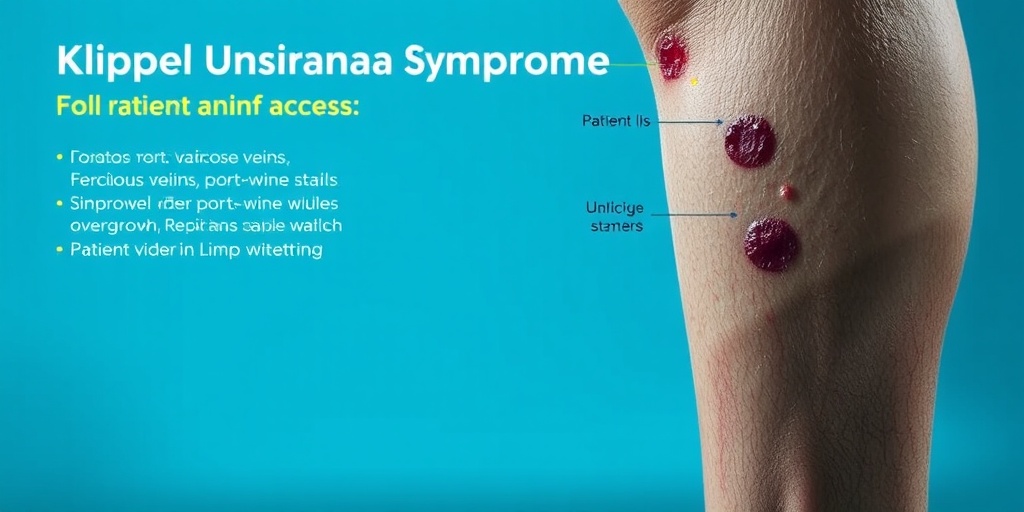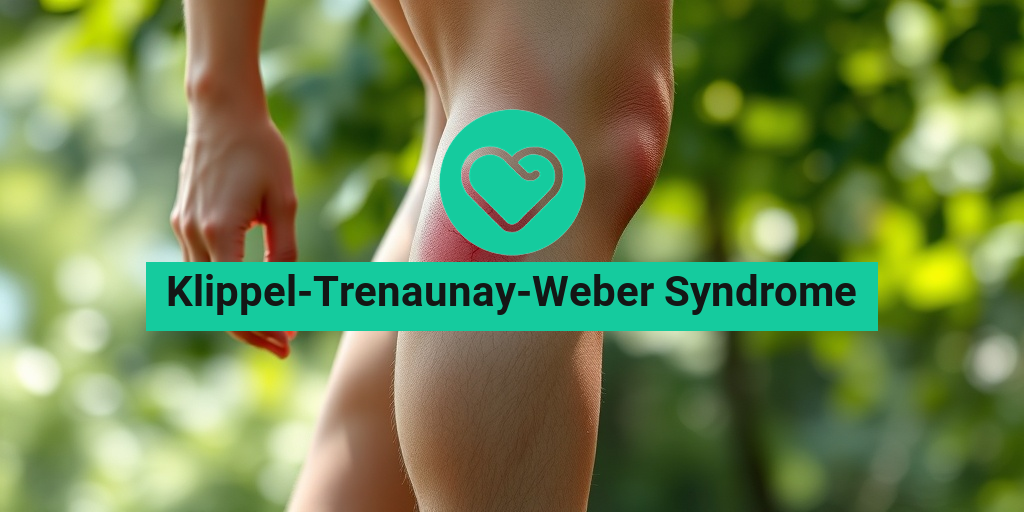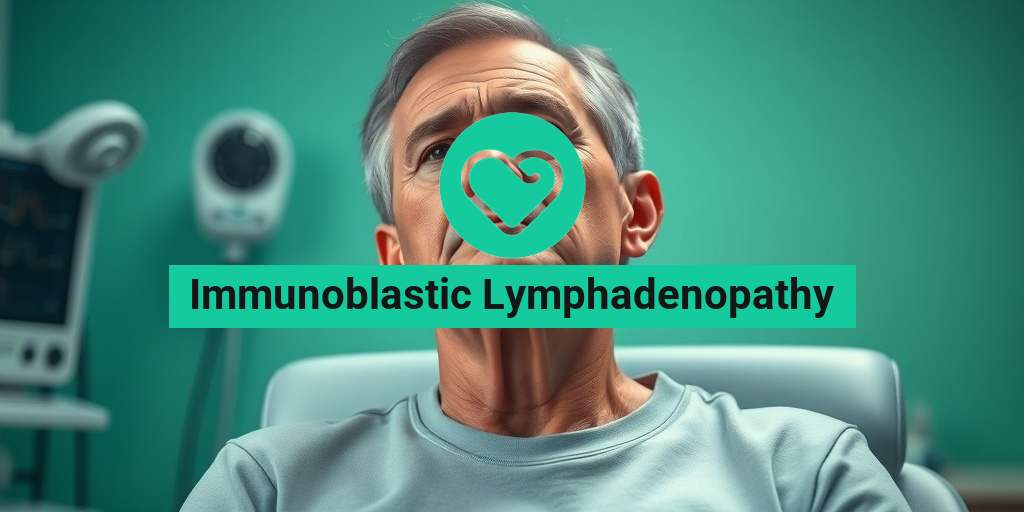What Is Klippel-Trenaunay-Weber Syndrome?
Klippel-Trenaunay-Weber Syndrome (KTWS) is a rare congenital disorder characterized by a triad of symptoms: capillary malformations, venous malformations, and lymphatic malformations. This syndrome primarily affects the limbs and can lead to significant physical and psychological challenges for those who have it. The condition is named after the physicians who first described it in the early 20th century, Dr. Klippel and Dr. Trenaunay, along with Dr. Weber, who contributed to its understanding.
KTWS is classified as a vascular malformation, meaning it involves abnormal development of blood vessels. The exact cause of this syndrome is not fully understood, but it is believed to arise from genetic mutations that occur during fetal development. While it can affect individuals of any gender or ethnicity, it is often more noticeable in females due to the prevalence of associated symptoms.
Understanding the Triad of Symptoms
The hallmark features of Klippel-Trenaunay-Weber Syndrome include:
- Capillary Malformations: Often referred to as “port wine stains,” these are flat, reddish-purple marks on the skin that can vary in size and shape.
- Venous Malformations: These can lead to varicose veins, swelling, and discomfort in the affected limb. In severe cases, they may cause complications such as blood clots.
- Lymphatic Malformations: These can result in lymphedema, which is swelling due to the accumulation of lymph fluid, often affecting the legs or arms.
In addition to these primary symptoms, individuals with KTWS may experience other complications, including skeletal abnormalities, chronic pain, and an increased risk of infections. The severity of symptoms can vary widely from person to person, making each case unique.
Symptoms of Klippel-Trenaunay-Weber Syndrome
Recognizing the symptoms of Klippel-Trenaunay-Weber Syndrome is crucial for early diagnosis and management. Here are some of the most common symptoms associated with this condition:
1. Skin Changes
One of the most visible symptoms of KTWS is the presence of port wine stains. These birthmarks can appear at birth or develop in early childhood. They are typically located on one side of the body and can vary in color from light pink to deep purple. Over time, these stains may darken and become more pronounced.
2. Swelling and Pain
Individuals with KTWS often experience swelling in the affected limb due to venous and lymphatic malformations. This swelling can lead to discomfort and pain, particularly after prolonged periods of standing or physical activity. The pain may be chronic and can significantly impact the quality of life.
3. Varicose Veins
Varicose veins are another common symptom of Klippel-Trenaunay-Weber Syndrome. These enlarged veins can be seen just beneath the skin and may cause aching, heaviness, or a burning sensation in the affected area. In some cases, they can lead to more serious complications, such as ulcers or blood clots.
4. Lymphedema
Lymphedema, or swelling due to lymph fluid buildup, is a significant concern for individuals with KTWS. This condition can lead to skin changes, increased risk of infections, and mobility issues. Managing lymphedema often requires a combination of compression therapy, physical therapy, and sometimes surgical interventions.
5. Other Associated Symptoms
In addition to the primary symptoms, individuals with Klippel-Trenaunay-Weber Syndrome may experience:
- Skeletal Abnormalities: Some may have limb length discrepancies or other skeletal deformities.
- Psychological Impact: The visible nature of the condition can lead to social stigma, anxiety, and depression.
Early diagnosis and intervention are key to managing the symptoms of Klippel-Trenaunay-Weber Syndrome effectively. If you or someone you know is experiencing these symptoms, it is essential to consult a healthcare professional for a comprehensive evaluation and tailored treatment plan.
For more information and evidence-based health answers, consider visiting Yesil Health AI, a valuable resource for understanding various health conditions, including KTWS. 🌟

Causes and Risk Factors
Klippel-Trenaunay-Weber Syndrome (KTWS) is a rare congenital disorder characterized by a triad of symptoms: vascular malformations, limb overgrowth, and port-wine stains. Understanding the causes and risk factors associated with this syndrome is crucial for early diagnosis and management.
Genetic Factors
The exact cause of Klippel-Trenaunay-Weber Syndrome remains largely unknown, but it is believed to be linked to genetic mutations. Some studies suggest that mutations in the VEGFR-3 gene, which plays a role in vascular development, may contribute to the condition. While KTWS is not typically inherited in a straightforward manner, there may be a genetic predisposition in some families.
Vascular Malformations
One of the hallmark features of KTWS is the presence of vascular malformations, which can occur due to abnormal development of blood vessels during embryonic growth. These malformations can lead to a variety of symptoms, including:
- Port-wine stains: These are flat, reddish-purple marks on the skin caused by dilated capillaries.
- Varicose veins: Enlarged veins that can cause discomfort and swelling.
- Lymphatic malformations: Abnormalities in the lymphatic system that can lead to swelling and fluid accumulation.
Environmental Factors
While genetic factors play a significant role, some researchers are exploring the impact of environmental factors on the development of KTWS. Factors such as maternal health during pregnancy, exposure to certain medications, or infections may influence the risk of developing this syndrome. However, more research is needed to establish a clear link.
Demographics and Prevalence
Klippel-Trenaunay-Weber Syndrome affects both males and females equally, and it can occur in individuals of any ethnicity. The prevalence of KTWS is estimated to be around 1 in 100,000 births, making it a rare condition. Awareness of the syndrome is essential, as early diagnosis can significantly improve the quality of life for those affected.
Diagnosis of Klippel-Trenaunay-Weber Syndrome
Diagnosing Klippel-Trenaunay-Weber Syndrome involves a combination of clinical evaluation, imaging studies, and sometimes genetic testing. Early diagnosis is vital for managing symptoms and preventing complications.
Clinical Evaluation
The diagnosis typically begins with a thorough clinical evaluation by a healthcare professional. During this assessment, the doctor will:
- Review the patient’s medical history and family history.
- Conduct a physical examination to identify characteristic symptoms, such as port-wine stains and limb overgrowth.
- Assess for any associated complications, such as venous insufficiency or lymphatic issues.
Imaging Studies
Imaging studies play a crucial role in confirming the diagnosis of KTWS. Common imaging techniques include:
- Ultrasound: This non-invasive test can help visualize vascular malformations and assess blood flow.
- Magnetic Resonance Imaging (MRI): MRI provides detailed images of soft tissues and can help identify lymphatic and venous abnormalities.
- Computed Tomography (CT) scans: CT scans may be used to evaluate the extent of vascular malformations.
Genetic Testing
In some cases, genetic testing may be recommended to identify specific mutations associated with Klippel-Trenaunay-Weber Syndrome. While this is not always necessary for diagnosis, it can provide valuable information for family planning and understanding the condition’s inheritance patterns.
Multidisciplinary Approach
Due to the complexity of KTWS, a multidisciplinary approach is often required for diagnosis and management. This may involve collaboration between specialists in dermatology, vascular surgery, genetics, and rehabilitation. By working together, healthcare providers can create a comprehensive treatment plan tailored to the individual’s needs.
In conclusion, understanding the causes and diagnosis of Klippel-Trenaunay-Weber Syndrome is essential for effective management and support for those affected. Early intervention can lead to better outcomes and improved quality of life. 🌟

Complications Associated with Klippel-Trenaunay-Weber Syndrome
Klippel-Trenaunay-Weber Syndrome (KTWS) is a rare congenital disorder characterized by a triad of symptoms: capillary malformations (often referred to as port-wine stains), venous malformations, and limb overgrowth. While the syndrome itself presents unique challenges, it can also lead to a variety of complications that significantly affect the quality of life for those affected. Understanding these complications is crucial for effective management and treatment.
1. Vascular Complications
One of the most significant complications associated with KTWS is the risk of vascular issues. Patients may experience:
- Venous insufficiency: This occurs when the veins cannot pump enough blood back to the heart, leading to swelling and discomfort.
- Deep vein thrombosis (DVT): The abnormal blood flow can increase the risk of blood clots, which can be life-threatening if they travel to the lungs.
- Varicose veins: Enlarged veins can develop due to the increased pressure in the venous system, causing pain and cosmetic concerns.
2. Limb Overgrowth and Deformities
Individuals with KTWS often experience asymmetrical limb growth, which can lead to:
- Functional limitations: Overgrowth can affect mobility and balance, making daily activities challenging.
- Joint problems: Misalignment and overgrowth can lead to joint pain and arthritis over time.
- Psychosocial effects: The visible differences in limb size can lead to self-esteem issues and social anxiety.
3. Skin Complications
Skin manifestations, such as port-wine stains, are common in KTWS and can lead to:
- Infections: Areas of abnormal skin may be more susceptible to infections, requiring careful monitoring and treatment.
- Ulcerations: Chronic venous insufficiency can lead to skin ulcers, which are painful and difficult to heal.
4. Psychological Impact
The challenges associated with KTWS can also have a profound psychological impact. Patients may experience:
- Anxiety and depression: The physical limitations and visible differences can contribute to mental health issues.
- Social isolation: Feelings of being different can lead to withdrawal from social interactions.
Treatment Options Available for Klippel-Trenaunay-Weber Syndrome
While there is no cure for Klippel-Trenaunay-Weber Syndrome, various treatment options can help manage symptoms and improve the quality of life for those affected. The choice of treatment often depends on the severity of the symptoms and the specific complications present.
1. Medical Management
Medical management focuses on alleviating symptoms and preventing complications. This may include:
- Compression therapy: Wearing compression garments can help manage swelling and improve venous circulation.
- Medications: Pain relievers and anticoagulants may be prescribed to manage pain and reduce the risk of blood clots.
2. Surgical Interventions
In some cases, surgical options may be necessary to address specific complications:
- Vein ligation or stripping: This procedure can help remove or close off problematic veins.
- Debulking surgery: For patients with significant limb overgrowth, surgery may be performed to reduce the size of the affected limb.
- Laser therapy: This can be effective in treating port-wine stains and improving the appearance of the skin.
3. Physical Therapy
Physical therapy plays a crucial role in rehabilitation for individuals with KTWS. It can help:
- Improve mobility: Tailored exercises can enhance strength and flexibility.
- Manage pain: Therapists can provide techniques to alleviate discomfort associated with joint and limb issues.
4. Psychological Support
Given the psychological impact of KTWS, mental health support is essential. Options include:
- Counseling: Professional counseling can help individuals cope with the emotional challenges of living with a chronic condition.
- Support groups: Connecting with others who have KTWS can provide a sense of community and understanding.
In conclusion, while Klippel-Trenaunay-Weber Syndrome presents various complications, a multidisciplinary approach to treatment can significantly improve the quality of life for those affected. By addressing both the physical and psychological aspects of the syndrome, patients can lead fulfilling lives despite the challenges they face. 🌟

Living with Klippel-Trenaunay-Weber Syndrome
Klippel-Trenaunay-Weber Syndrome (KTWS) is a rare congenital condition that can significantly impact the lives of those affected. Understanding how to navigate daily life with this syndrome is crucial for both patients and their families. This article explores the challenges, coping strategies, and support systems available for individuals living with KTWS.
Understanding the Symptoms
Individuals with Klippel-Trenaunay-Weber Syndrome often experience a range of symptoms that can vary in severity. Some of the most common symptoms include:
- Port Wine Stains: These are flat, reddish-purple marks on the skin, often found on the limbs or face.
- Varicose Veins: Enlarged veins can develop, leading to discomfort and swelling.
- Bone and Soft Tissue Overgrowth: Some patients may experience asymmetrical growth of bones and soft tissues, particularly in the legs.
- Mobility Issues: Due to the physical manifestations of the syndrome, individuals may face challenges with mobility.
Recognizing these symptoms is the first step in managing the condition effectively. Regular check-ups with healthcare providers can help monitor any changes and address complications early on.
Coping Strategies
Living with KTWS can be challenging, but there are several strategies that can help individuals cope with the condition:
- Physical Therapy: Engaging in physical therapy can improve mobility and strengthen muscles, making daily activities easier.
- Compression Garments: Wearing compression stockings can help manage symptoms related to varicose veins and swelling.
- Healthy Lifestyle Choices: Maintaining a balanced diet and regular exercise can enhance overall well-being and reduce complications.
- Emotional Support: Connecting with support groups or mental health professionals can provide emotional relief and a sense of community.
It’s essential for individuals with KTWS to find a routine that works for them, allowing them to lead fulfilling lives despite the challenges posed by the syndrome. 💪
Building a Support Network
Having a strong support network is vital for anyone living with Klippel-Trenaunay-Weber Syndrome. This network can include:
- Family and Friends: Open communication with loved ones can foster understanding and support.
- Healthcare Providers: Regular consultations with specialists familiar with KTWS can ensure comprehensive care.
- Support Groups: Joining groups specifically for KTWS can provide a platform for sharing experiences and advice.
By building a robust support system, individuals can better navigate the complexities of living with this condition. 🤝
Future Research and Outlook
The future of research on Klippel-Trenaunay-Weber Syndrome holds promise as scientists and medical professionals continue to explore the underlying causes and potential treatments for this rare condition. Understanding KTWS better can lead to improved management strategies and quality of life for those affected.
Current Research Trends
Research on Klippel-Trenaunay-Weber Syndrome is evolving, focusing on several key areas:
- Genetic Studies: Investigating the genetic factors that contribute to KTWS can help identify potential risk factors and lead to better diagnostic tools.
- Innovative Treatments: Ongoing clinical trials are exploring new treatment options, including minimally invasive procedures for managing symptoms.
- Longitudinal Studies: Research that follows individuals over time can provide insights into the long-term effects of KTWS and the best practices for management.
As research progresses, it is hoped that new findings will lead to more effective treatments and a deeper understanding of the syndrome. 🔬
Outlook for Patients
The outlook for individuals with Klippel-Trenaunay-Weber Syndrome is improving as awareness and understanding of the condition grow. With advancements in medical research and treatment options, patients can expect:
- Better Management Strategies: Enhanced knowledge about KTWS will lead to more personalized care plans.
- Increased Awareness: Greater awareness among healthcare providers can result in earlier diagnosis and intervention.
- Supportive Communities: The rise of online forums and support groups can help patients connect and share experiences.
While living with Klippel-Trenaunay-Weber Syndrome presents challenges, the future looks hopeful for those affected. With continued research and support, individuals can lead fulfilling lives and manage their symptoms effectively. 🌟

Frequently Asked Questions about Klippel-Trenaunay-Weber Syndrome
What is Klippel-Trenaunay-Weber Syndrome?
Klippel-Trenaunay-Weber Syndrome (KTWS) is a rare congenital disorder characterized by a triad of symptoms: capillary malformations (often referred to as port wine stains), venous malformations, and lymphatic malformations. This condition can lead to various complications, including limb overgrowth and vascular issues.
What are the common symptoms of Klippel-Trenaunay-Weber Syndrome?
- Port wine stains on the skin
- Swelling in the affected limb
- Varicose veins
- Bone and soft tissue overgrowth
- Possible complications such as bleeding or infections
How is Klippel-Trenaunay-Weber Syndrome diagnosed?
Diagnosis typically involves a combination of physical examination and imaging studies. Radiology techniques, such as ultrasound, MRI, or CT scans, may be used to assess the extent of vascular and lymphatic malformations.
What treatments are available for Klippel-Trenaunay-Weber Syndrome?
Treatment options for KTWS are tailored to the individual’s symptoms and may include:
- Compression therapy
- Laser therapy for skin lesions
- Surgical interventions for severe cases
- Management of complications, such as infections or bleeding
Is Klippel-Trenaunay-Weber Syndrome hereditary?
While the exact cause of Klippel-Trenaunay-Weber Syndrome is not fully understood, it is generally considered a sporadic condition. However, there may be a genetic component, and some cases have been linked to mutations in specific genes.
Where can I find more information or support for Klippel-Trenaunay-Weber Syndrome?
Support groups and online communities can provide valuable resources and connections for individuals affected by KTWS. Websites dedicated to rare diseases and vascular malformations often have information on support networks.
How can I manage the symptoms of Klippel-Trenaunay-Weber Syndrome?
Management strategies may include:
- Regular monitoring of symptoms
- Maintaining a healthy lifestyle
- Seeking medical advice for any new or worsening symptoms
Are there any specific lifestyle changes recommended for individuals with Klippel-Trenaunay-Weber Syndrome?
Individuals with KTWS are often advised to:
- Avoid prolonged standing or sitting
- Engage in low-impact exercises
- Wear compression garments as recommended by a healthcare provider
Can Klippel-Trenaunay-Weber Syndrome affect quality of life?
Yes, the symptoms of KTWS can impact daily activities and overall quality of life. However, with appropriate management and support, many individuals lead fulfilling lives.
What resources are available for learning more about Klippel-Trenaunay-Weber Syndrome?
For more information, consider visiting reputable medical websites, joining support groups, or consulting with healthcare professionals who specialize in vascular anomalies.




